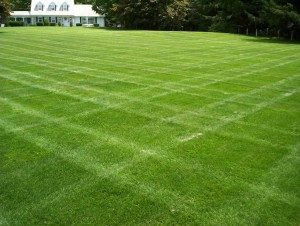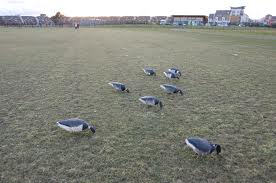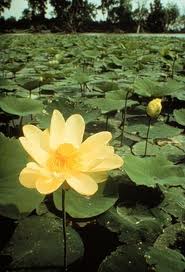It sounds like a trick question, when is a lake a lawn, but there is a non-tricky answer: When it is in Florida.
 Regular followers of this writer know I am not a fan of lawns as an every day household item. I think lawns are great for national monuments, cemeteries, and golf courses. They are an irrational money pit for residential homes. Lawn grass is the second largest crop in America after corn, another grass. In fact, we grow more lawn grass than anyone else in the world. Compare that to Greece where lawns are nearly nonexistent. The only “lawn” I’ve ever seen there is around a small monument in Athens. Lawm is so rare you don’t see lawn mowers for sale. Goats do the job for free and give milk in return.
Regular followers of this writer know I am not a fan of lawns as an every day household item. I think lawns are great for national monuments, cemeteries, and golf courses. They are an irrational money pit for residential homes. Lawn grass is the second largest crop in America after corn, another grass. In fact, we grow more lawn grass than anyone else in the world. Compare that to Greece where lawns are nearly nonexistent. The only “lawn” I’ve ever seen there is around a small monument in Athens. Lawm is so rare you don’t see lawn mowers for sale. Goats do the job for free and give milk in return.
What does that have to do with lakes? First consider the lawn. A wide open space, barren of any wild growth. Take that same sterile mentality and apply it to water and you get a lot of Florida lakes, especially those in residential areas.
 In Florida this is what a lake should look like: Lawn right down to the water’s edge, and then only water. No water plants are allowed to grow in the lake. No cattails, no pond lilies, no rushes. However, floating plastic ducks and geese are allowed to give the impression the lake is alive where as real waterfowl won’t land there because there is nothing to eat and no place to hide. One also usually sees a pump in the middle circulating the water to keep the dead lake from slipping into slime. Just as the lawns are sterile and artificial — think deer statues — so, too, are the lakes.
In Florida this is what a lake should look like: Lawn right down to the water’s edge, and then only water. No water plants are allowed to grow in the lake. No cattails, no pond lilies, no rushes. However, floating plastic ducks and geese are allowed to give the impression the lake is alive where as real waterfowl won’t land there because there is nothing to eat and no place to hide. One also usually sees a pump in the middle circulating the water to keep the dead lake from slipping into slime. Just as the lawns are sterile and artificial — think deer statues — so, too, are the lakes.
Left on their own the lakes will soon be alive with food, both plants and aquatic life. But at the same time the lakes will also slowly fill in and grow smaller. Over several decades the lake will become a marsh, and marsh-front property is not as profitable as “lake-front” property.
When man moved off the farm into suburbia he quit growing food and began growing lawn and toxic ornamentals, as if he wanted to distance himself as far from living off the land as possible. Then he extended that same barren mentality to lakes. They have to be bodies of dead water, not oases of food and life.
The elimination of all but obedient nature on residential land and water seems perverse to me, the extension of some mental compulsion usually treated by professionals. I do not see the sense in maintaining plants that do not produce anything except expense. And preventing a lake from providing thee, me and the denizens of nature food and shelter seems environmentally unsound, a problem not a solution.
 Two years ago, about 12 miles from me, a 10-acre residential lake with grass right to water’s edge blossomed in thousands of American Lotus (you can see those pictures in the article on American Lotus here.) This greatly offended the residents. How dare large yellow flowers grow in their lake. A plant exterminator was immediately hired — I actually talked to the president of the homeowners’ association — and the lake was chemically purged of that offending plant. Today the lake is barren again, save for the pump doing what nature used to do. But, the humans with their putting-green lawns of decapitated grass are happy with their sterile lake. Let’s hope they never are so hungry they are forced to eat their lawns. I wonder what view they might have then of all those offending, nutritious lotus?
Two years ago, about 12 miles from me, a 10-acre residential lake with grass right to water’s edge blossomed in thousands of American Lotus (you can see those pictures in the article on American Lotus here.) This greatly offended the residents. How dare large yellow flowers grow in their lake. A plant exterminator was immediately hired — I actually talked to the president of the homeowners’ association — and the lake was chemically purged of that offending plant. Today the lake is barren again, save for the pump doing what nature used to do. But, the humans with their putting-green lawns of decapitated grass are happy with their sterile lake. Let’s hope they never are so hungry they are forced to eat their lawns. I wonder what view they might have then of all those offending, nutritious lotus?


